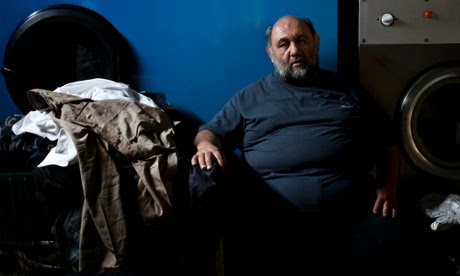Iranian New Year, Nowruz, celebrates spring and nature's rebirth, bringing L.A.'s Persian community together to share its tradition.
Los Angeles Times
Wearing a dark blue traditional Iranian garment, Roxanna Ameri followed the rhythm of the music as she marched with others outfitted in festive shades of red, green and purple.
Wearing a dark blue traditional Iranian garment, Roxanna Ameri followed the rhythm of the music as she marched with others outfitted in festive shades of red, green and purple.
Ameri, 18, was among hundreds of Iranians who flocked to the Los Angeles County Museum of Art
last weekend for the sixth annual Iranian New Year celebration, hosted
by the Farhang Foundation, a nonprofit that celebrates Iranian art and
culture in Southern California.
March 20 commemorates both the first day of spring and the Iranian holiday Nowruz, which translates to "new day." The holiday, which ends Sunday in the U.S. and on Tuesday in Iran, is a time for Iranians across the globe to gather with family and friends to celebrate spring and the rebirth of nature.
In Southern California, the holiday gives the Iranian community, one of the largest outside of Iran, an opportunity to celebrate together. The LACMA event included performances by traditional Iranian dancers as well as live music.
"I feel that there is a great sense of unity that comes with this holiday," said Ameri, a Stanford University freshman. "It is not affiliated with any religion or any one race. Instead, the ancient tradition is rooted in a set of universal ideas such as purity, health and cleansing."
March 20 commemorates both the first day of spring and the Iranian holiday Nowruz, which translates to "new day." The holiday, which ends Sunday in the U.S. and on Tuesday in Iran, is a time for Iranians across the globe to gather with family and friends to celebrate spring and the rebirth of nature.
In Southern California, the holiday gives the Iranian community, one of the largest outside of Iran, an opportunity to celebrate together. The LACMA event included performances by traditional Iranian dancers as well as live music.
"I feel that there is a great sense of unity that comes with this holiday," said Ameri, a Stanford University freshman. "It is not affiliated with any religion or any one race. Instead, the ancient tradition is rooted in a set of universal ideas such as purity, health and cleansing."








